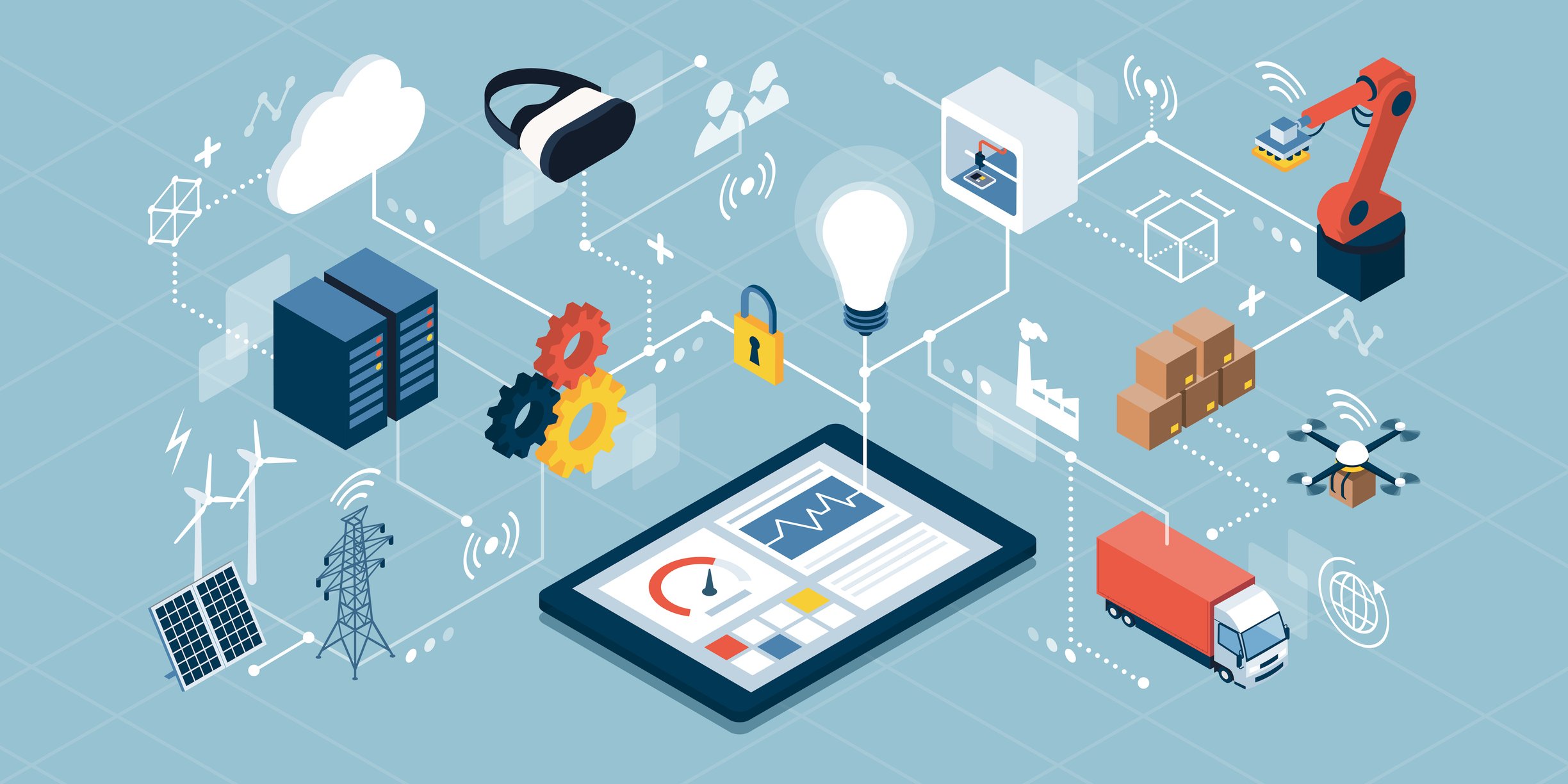
Unlocking Future: IoT in the Supply Chain | Image source: tecsys.com
With its straightforward solutions and increased control, Internet of Things technology is transforming this industry. The benefits of IoT in the supply chain are even more substantial.
Producing accurate information has become a must for corporations in a world where consumers want more transparency from businesses.
In this article, we’ll demonstrate how IoT is transforming the supply chain digitally and what to anticipate for this partnership’s future. Follow along while we explore.
Read also: 5G’s Disruptive Impact on Logistics: A Game-Changer in Motion!
Current scenario
The daily obstacles we face in our nation, such as the absence of infrastructure, hurt the supply chain and have the potential to disrupt it in every market area, from manufacturing to agriculture.
Transportation delays, cargo theft, a lack of monitoring, human errors, and data failures due to obsolete information are just a few of the frequent problems that harm business profitability and customer relationships, whether B2B or B2C.
When it comes to perishable goods, small errors might result in significant losses. 30% of all short-lived items, according to Intel, never make it from the manufacturer to the consumer.
This waste is not only a significant financial issue for businesses, but it is also distressing because many families struggle to feed themselves while a lot of food is wasted due to poor planning.
The Internet of Things technology has emerged as the only method to better the existing situation, which is engulfed in chaos.
A survey carried out in collaboration between Zebra and Forrester found that between 58% and 77% of firms believe that the location of items, containers, and workers is one of the IoT’s major tasks, making it completely integrated with the supply chain.
Due to the necessity for specialization, which is lacking in most businesses, people have historically sought to outsource freight transportation and other logistical services.
However, with this approach, businesses are able to concentrate on their core competencies while a specialized facility now manages their logistics, which ultimately results in an improved supply chain.
Main applications of IoT in the supply chain
There are currently many instances of IoT technologies being used in the supply chain. We share a few of them below.
MoDe project
The MoDe project, funded by the European Union, aims to develop automobiles that can recognize when maintenance is required and convey that information to a control center.
By doing so, the business will always be able to send the vehicle for repair even before it breaks down in the middle of a trip.
Smart bottle
The beverage distilling business Blue Label has developed a smart label for its bottles that allows customers to follow the entire production process on their smartphones.
This is an illustration of how IoT may enhance the value of a product and increase consumer transparency, making them feel safer while making a purchase.
Role ale
Role Ale creates beers and uses hops, a very perishable ingredient. Any alteration in consistency has an impact on the finished output. As a result, the corporation is quite concerned about how it is handled.
IoT technology has already benefited the entire Role Ale supply chain, enabling the business to follow the hops and stop them from losing their freshness after harvest.
Benefits of IoT in the supply chain
The use of IoT in the supply chain has a number of advantages. Here is a brief summary of the key ones:
Control
It is possible to have real-time control and visibility of the entire process with sensors installed on all machines and vehicles that are a part of the supply chain.
Transparency
Transparency, which is of the utmost importance in today’s society, may be gained by gathering data on the entire route a product takes from the factory floor to the consumer.
Security
By installing sensors across the fleet, you increase safety because you can monitor all routes in real-time and spot any unusual circumstances.
Lowest cost
One of the key benefits of using IoT in the Supply Chain is reducing waste. It is simple to pinpoint the delicate spots that cause the biggest issues once every step is made apparent.
Forecasts for the Future of IoT in the supply chain
A recent Business Insider survey found that almost 70% of businesses have already launched some sort of program to address the use of IoT in their supply chains.
It’s understandable why given consumers’ ongoing need for transparency and businesses’ need to cut costs. But there is still a long way to go for technology.
There must be a robust information exchange between businesses and connectivity across all significant suppliers for the IoT to truly generate value.
Although we are moving in that direction, we are still not quite where we should be. Additionally, researchers are still working to create new, contemporary, and efficient sensors.
We will soon be able to observe the development of new technologies to support and enhance the companies’ production chain monitoring process.
Blockchain technology is a prime illustration of this; it has been one of businesses’ biggest bets in recent years as a technological revolution. In relation to the supply chain, it will be a significant disruptive factor.
The supply chain’s use of IoT will continue to evolve significantly. Companies that begin adapting now, however, will have an advantage in the drive toward modernity.


